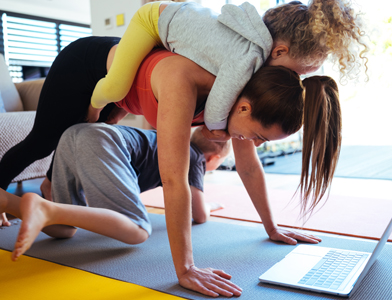Moving Forward in a World Where ‘Normal’ Eludes Us
As many schools and workplaces forge ahead with plans for in-person learning and work, CDC guidance continues to change with frequency.
Those opposed to moving ahead with in-person events share concern over quick-change guidance on precautions for safety and spread. Preliminary evidence suggests that while only a small number of fully vaccinated people contract COVID-19, those who become infected with the Delta variant can spread the virus to others.
Proponents of in-person events cite largely effective vaccines and an evidence base that we did not have at the onset of the pandemic as reasons to press on to ‘normal.’
But amid the change, how do we move forward in a way that is best for our households, employers and health?
Change can be challenging. If you are anxious, depressed or feel overwhelmed with stress, help is available.
If you return to work
In April, a Mercer survey indicated that 43% of companies would continue with remote work for the foreseeable future. But, as some employers prepare for staff to work on-site, workers have mixed feelings. Some people are eager to swap their makeshift home office for a dedicated workspace and meetings with colleagues in person. Others are used to the lives they built and the routines they created during the pandemic. A recent survey indicates that nearly two-thirds of employees are worried about the transition back to work.
Regardless of masking and distancing guidelines, a return to the office means commuting, interacting with more people, and special child and pet care plans. Whether you are returning a few days a week or full-time, the changes can feel overwhelming. But it's not all bad. You can reduce stress by focusing on the positives. Benefits of returning to the office may be establishing a firmer boundary between your work and home life or having the space to interact and connect with others.
As with any time of transition, be patient with yourself. And take the following steps to understand and establish boundaries. Doing so can help you feel safer when you return to the office.
- Consider what you desire and what feels comfortable to you.
- Develop a plan.
- Communicate your needs.
Establishing boundaries
Setting boundaries isn't always easy. You must understand where your boundaries lie and openly communicate your findings to others. Perhaps when working from home, you're more available to meet challenges at home regarding childcare and schooling, which prevents stress from snowballing. And you'd like to request a hybrid schedule instead of returning to the office full-time. If you have been working from home successfully since the pandemic began, identify why it's working for you. Think about what you want your days to look like moving ahead. And communicate that and the many ways you have contributed at work since the pandemic began to your manager. Be reasonable in your request.
To set boundaries, you must communicate your needs and limits, which can be stressful.
- Try to keep an open mind.
- Consider your request from the other party's perspective.
Keep in mind that setting boundaries doesn't always go smoothly and may require some negotiation. But the conversations foster mutual respect and can lead to less stress down the road.
Protecting your mental health
Along with thinking positively and establishing boundaries, making a deliberate effort to support your mental health can help ease the transition.
Experts recommend adding these mental wellness tools to your daily routine:

Make time for short exercise sessions at home or take a daily walk.

Breathing exercises, meditation and mindfulness can help you regulate your emotions and cultivate feelings of gratitude. Also, mindfully recognizing your reactions in certain situations can help you identify and manage stressors.

Sleep restores your mind and body and can help you process and regulate your emotions.

With social activities, begin with gatherings of one or two people, then ease into larger groups by giving yourself extra personal space and planning an exit if you feel overwhelmed.
For up-to-date information about COVID 19, including vaccine information and other resources to help you get back to normal, visit CareFirst's Coronavirus Resource Center.